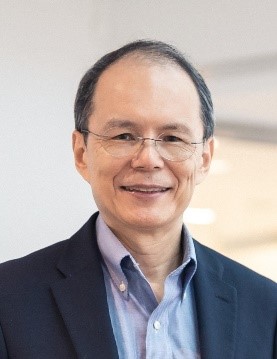Abstract:
Animals such as geckos can climb vertical walls or even move about upside down on ceilings. Such locomotion requires strong and ubiquitous adhesion between their feet and various surfaces, yet easy detachment when needed. However, current smart adhesives made of elastomers suffer from the long-standing challenges of the adhesion paradox (rapid decrease in adhesion strength on rough surfaces despite strong molecular level interactions) and the switchability conflict (trade-off between adhesion strength and easy detachment). Here, we report a new method that overcomes the adhesion paradox and switchability conflict by utilizing the rubber-glass phase transition in SMPs. We demonstrate, through mechanical testing and mechanics modeling, that the conformal contact in the rubbery state followed by the shape-locking effect in the glassy state results in the so-called R2G (rubber-to-glass) adhesion with extraordinary adhesion strength (> 1 MPa) on rough surfaces, overcoming the classic adhesion paradox. Furthermore, upon transitioning back to the rubbery state, the shape-memory effect of SMPs enables easy detachment, leading to improvement in adhesion switchability (up to 103, defined as the ratio of the SMP R2G adhesion strength to its rubbery-state detachment strength) as the surface roughness increases. The working principle and the mechanics model of R2G adhesion provide guidelines for developing stronger and more switchable adhesives adaptable to rough surfaces, thereby enhancing the capabilities of smart adhesives, and impacting various fields such as adhesive grippers and climbing robots.
Brief Biography:
K. Jimmy Hsia is President’s Chair Professor in the School of Mechanical & Aerospace Engineering and School of Chemistry, Chemical Engineering & Biotechnology at Nanyang Technological University (NTU) in Singapore. He received B.S. from Tsinghua University, China, M.S. from Beijing University of Aeronautics, and Ph.D. from MIT. His research interests include mechanics of soft materials, mechanics of plant organ morphogenesis and morphing metamaterials, mechanics of mammalian cells, micro- and nanotechnologies in mechanical devices and structures, smart adhesive systems, soft robotics. He is Fellow of American Association for the Advancement of Science (AAAS), Fellow of American Institute for Medical and Biological Engineers (AIMBE), Fellow of American Society of Mechanical Engineers (ASME), and recipient of NSF Research Initiation Award, Max-Planck Society Scholarship, and Japan Society for Promotion of Science Fellowship. He was Founding Dean of Graduate College and Vice President (Alumni & International Affairs) at NTU. Before joining NTU, Hsia was Professor of Mechanical Engineering and Biomedical Engineering and Vice Provost for International Programs at Carnegie Mellon University, and before then was W. Grafton and Lillian B. Wilkins Professor of Mechanical Science and Engineering at the University of Illinois at Urbana-Champaign (UIUC). From 2005-2007, Hsia served as Founding Director of Nano and Bio Mechanics Program in the Directorate for Engineering at NSF. He is Founding co-Editor-in-Chief of an Elsevier journal, Extreme Mechanics Letters.

